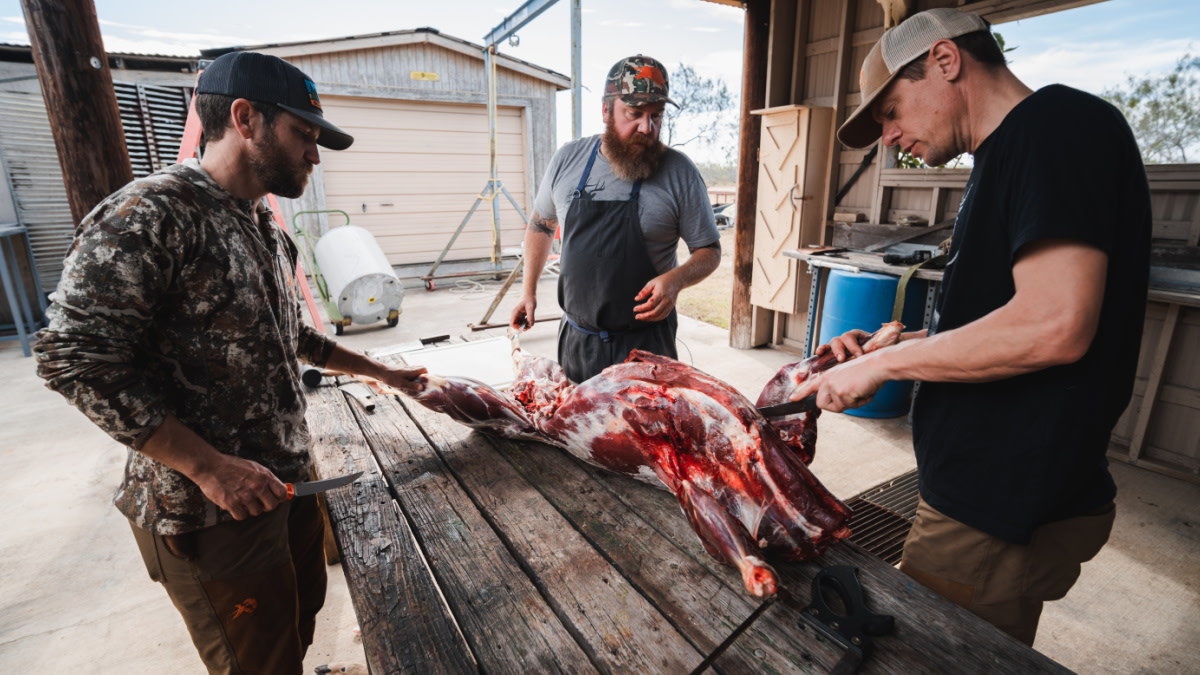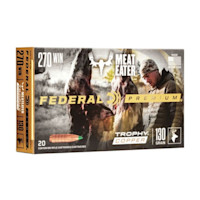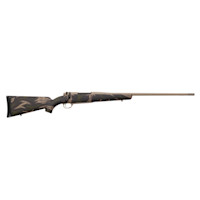
In a 1942 edition of Popular Mechanics, an article titled “Super Speed Bullets Knock ‘Em Dead” describes a new wunderkind cartridge that launches a .22-caliber projectile an astounding 5,400 feet per second. The bullet maintains a flat trajectory out to 400 yards, but its real benefit—something the article calls “hydrostatic shock”—is even more incredible.
“The sudden and intense pressure to which a live target is subjected even when the skin is hardly creased disorganizes nerve centers all over the body, resulting in immediate death,” the article reports.
Since that article, the debate about hydrostatic shock has raged on in hunting magazines, academic papers, and Internet forums. Some hunters dismiss it as pop-science mumbo jumbo. Others will defend it to the end.
The concept makes some intuitive sense. Bullets travel very fast, and it’s plausible that the accompanying shock wave might impart nerve damage to the target. Most hunters have observed that some animals run 50 or 60 yards after being shot while others drop in their tracks. What explains the difference? Hydrostatic shock!
What is Hydrostatic Shock? Sometimes (incorrectly) called “hydraulic shock,” hydrostatic shock refers to the remote nerve damage caused by the shock wave of a fast-moving projectile when it encounters a target.
You’ve probably seen slow-motion footage of a bullet travelling through ballistic gelatin. The hydrostatic shock theory postulates that those shock waves don’t just make a temporary wound cavity—they operate throughout an animal’s body and cause sudden and catastrophic nerve damage.
The idea isn’t a new one. An 1898 New York Times article, for example, blames “hydraulic shock” for the death of a fish that was unlucky enough to be swimming in a lake in close proximity to a fast-moving projectile.
“On examination no wound was discoverable in the body, the death being due entirely to the hydraulic shock arising from the impact of the bullet with the water,” the article explains. The pressure waves produced by the bullet was enough to kill all the fish within a 2.5-foot radius.
Hunters have theorized similar effects within the bodies of game animals, and the belief in hydrostatic shock has partially driven the push for higher velocity bullets. Weatherby’s line of magnum cartridges are famous for dropping animals in their tracks, and many hunters attribute that phenomenon to remote nerve damage caused by the ultra-fast projectiles.
Is It Real? Is hydrostatic shock a real phenomenon? The safe answer is that scientists and ballisticians still aren’t sure. A 2013 article published in the Wildlife Society Bulletin describes “disagreement” among experts. You can find scientists who have embraced and dismissed the theory over the last 80 years.
In 1947, for example, a study published in Surgery concluded that “the high pressure of shock waves resulting from impact of missiles does not appear to cause damage.” A 1996 article by Vietnam-era trauma surgeon Martin Fackler asserted that no physical evidence exists for damage caused by a bullet’s pressure waves. In 2007, a group of researchers writing in Neurosurgery called hydrostatic shock a “relatively recent myth” concocted by soldiers and hunters to explain observed injuries.
More recent research, however, points to a strong link between high-pressure bullets and remote neural damage.
“Similar to many 20th century claims that smoking doesn’t cause cancer or that blast waves don’t cause traumatic brain injuries, the 20th century claims against hydrostatic shock were based on the absence of evidence in an era without carefully designed experiments or sensitive detection methods,” researcher Michael Courtney told MeatEater.
Courtney holds a Ph.D. in physics from MIT. He and his wife, Amy Courtney, who holds a Ph.D. in injury biomechanics from Harvard, have conducted a variety of experiments to determine the effects of a bullet’s pressure waves on an animal’s body.
In experiments conducted in 2007 and 2011, the Courtneys observed hemorrhaging along the abdominal walls, rear rib cages, and brains of whitetail deer that had been struck by a bullet. These areas were distant from both the permanent crush cavity and the temporary stretch cavity, and the researchers concluded that “the most likely cause of the hemorrhaging was the pressure wave.”
Other researchers have reached similar conclusions. A famous series of experiments conducted by a team of Swedish scientists in the late 1980s discovered remote injury to peripheral nerves, spinal cords, and brains of pigs that had been shot in the thigh. Research published in 2009 reported “cufflike pattern hemorrhages around small brain vessels” of people who had been shot in the chest, which the researchers attributed to “a shock wave caused by a penetrating bullet.”
Courtney’s 2010 overview of the scientific literature published in Neurosurgery sums it up like this: “Belief in the remote effects of penetrating projectiles may have originated with hunters and soldiers, but their reality is now well established in a broad body of scientific literature.”
The Takeaway for Hunters Of course, even if you acknowledge that hydrostatic shock can cause remote neural damage, it’s unclear when or if this phenomenon will take place—or whether it will be serious enough to incapacitate an animal. As a practical matter for hunters, hydrostatic shock is among the least important factors when selecting a cartridge for a specific species.
“In talking about hydrostatic shock, you have to ignore other things that are substantially more influential to the end result,” said Hornady’s Senior Ballistician Jayden Quinlan. Shot placement and projectile expansion, for example, are more important factors when you’re trying to kill an animal, he said.
Quinlan believes animals that drop in their tracks have succumbed to hydrostatic shock, but he also acknowledged that neither hunters nor projectile designers can control the level or effect that shock will have.
Still, the most successful hunters are those who pay attention to the little things, and it’s important to consider every variable that might influence terminal performance. Selecting a bullet and cartridge for maximum potential hydrostatic shock is not the same task as selecting a bullet and cartridge to target a specific species. But for medium-sized animals like whitetail deer, Quinlan said lead-core copper-jacketed bullets will expand more quickly and deposit more energy per inch of penetration into the animal than monolithic bullets. This makes them more likely to product hydrostatic shock.
“The traditional style of bullet has the correct ratio between rate of expansion and bullet integrity,” he said.
A fascinating study by South Carolina’s Department of Natural Resources backs up Quinlan’s recommendation. Researchers collected data on 493 harvested deer to determine the most successful firearms and ammunition. Among their findings, they determined that deer shot with soft-pointed bullets traveled an average of 16 fewer yards after being shot than deer shot with heavier monolithic bullets (27 yards vs. 43 yards). In addition, 58% of deer shot with soft bullets dropped in their tracks, compared with only 40% of deer shot with hard bullets.
Courtney sees this as more evidence that hydrostatic shock is a factor in animal incapacitation.
“Other factors being equal, bullets with larger pressure waves incapacitate more quickly on average than bullets with smaller pressure waves,” he said. “So, while there’s no guarantee that a deer hit in the chest with a high-pressure wave bullet will drop in its tracks, the theory predicts on average, it will not run as far.”
For the greatest hydrostatic shock, the velocity of a bullet should be as high as possible while still ensuring the bullet won’t break apart.
“To maximize hydrostatic shock, you should impact with the most energy possible,” Quinlan said. “That’s the mechanism for hydrostatic shock—the energy that projectile is carrying.”
Final Shot Maximizing hydrostatic shock won’t ensure a successful hunt. Shot placement is still more important. Choosing a rifle and caliber you can shoot accurately is still more important. But there’s plenty of evidence to suggest that it’s a real phenomenon, and it’s yet another thing to consider when selecting a caliber and cartridge for your next hunt.








